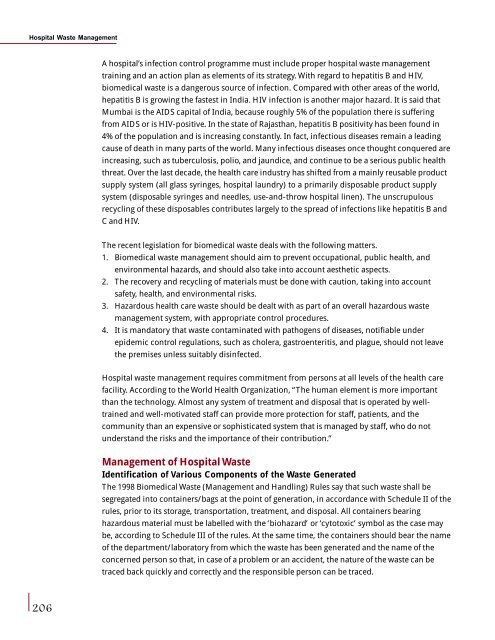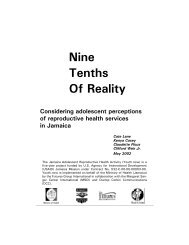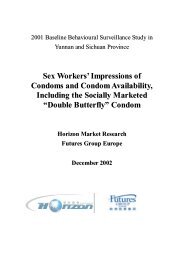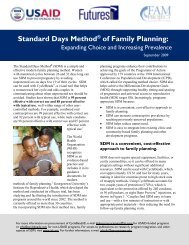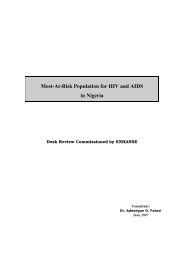Health Policy Issues and Health Programmes in ... - Amazon S3
Health Policy Issues and Health Programmes in ... - Amazon S3
Health Policy Issues and Health Programmes in ... - Amazon S3
- No tags were found...
Create successful ePaper yourself
Turn your PDF publications into a flip-book with our unique Google optimized e-Paper software.
Hospital Waste ManagementA hospital’s <strong>in</strong>fection control programme must <strong>in</strong>clude proper hospital waste managementtra<strong>in</strong><strong>in</strong>g <strong>and</strong> an action plan as elements of its strategy. With regard to hepatitis B <strong>and</strong> HIV,biomedical waste is a dangerous source of <strong>in</strong>fection. Compared with other areas of the world,hepatitis B is grow<strong>in</strong>g the fastest <strong>in</strong> India. HIV <strong>in</strong>fection is another major hazard. It is said thatMumbai is the AIDS capital of India, because roughly 5% of the population there is suffer<strong>in</strong>gfrom AIDS or is HIV-positive. In the state of Rajasthan, hepatitis B positivity has been found <strong>in</strong>4% of the population <strong>and</strong> is <strong>in</strong>creas<strong>in</strong>g constantly. In fact, <strong>in</strong>fectious diseases rema<strong>in</strong> a lead<strong>in</strong>gcause of death <strong>in</strong> many parts of the world. Many <strong>in</strong>fectious diseases once thought conquered are<strong>in</strong>creas<strong>in</strong>g, such as tuberculosis, polio, <strong>and</strong> jaundice, <strong>and</strong> cont<strong>in</strong>ue to be a serious public healththreat. Over the last decade, the health care <strong>in</strong>dustry has shifted from a ma<strong>in</strong>ly reusable productsupply system (all glass syr<strong>in</strong>ges, hospital laundry) to a primarily disposable product supplysystem (disposable syr<strong>in</strong>ges <strong>and</strong> needles, use-<strong>and</strong>-throw hospital l<strong>in</strong>en). The unscrupulousrecycl<strong>in</strong>g of these disposables contributes largely to the spread of <strong>in</strong>fections like hepatitis B <strong>and</strong>C <strong>and</strong> HIV.The recent legislation for biomedical waste deals with the follow<strong>in</strong>g matters.1. Biomedical waste management should aim to prevent occupational, public health, <strong>and</strong>environmental hazards, <strong>and</strong> should also take <strong>in</strong>to account aesthetic aspects.2. The recovery <strong>and</strong> recycl<strong>in</strong>g of materials must be done with caution, tak<strong>in</strong>g <strong>in</strong>to accountsafety, health, <strong>and</strong> environmental risks.3. Hazardous health care waste should be dealt with as part of an overall hazardous wastemanagement system, with appropriate control procedures.4. It is m<strong>and</strong>atory that waste contam<strong>in</strong>ated with pathogens of diseases, notifiable underepidemic control regulations, such as cholera, gastroenteritis, <strong>and</strong> plague, should not leavethe premises unless suitably dis<strong>in</strong>fected.Hospital waste management requires commitment from persons at all levels of the health carefacility. Accord<strong>in</strong>g to the World <strong>Health</strong> Organization, “The human element is more importantthan the technology. Almost any system of treatment <strong>and</strong> disposal that is operated by welltra<strong>in</strong>ed<strong>and</strong> well-motivated staff can provide more protection for staff, patients, <strong>and</strong> thecommunity than an expensive or sophisticated system that is managed by staff, who do notunderst<strong>and</strong> the risks <strong>and</strong> the importance of their contribution.”Management of Hospital WasteIdentification of Various Components of the Waste GeneratedThe 1998 Biomedical Waste (Management <strong>and</strong> H<strong>and</strong>l<strong>in</strong>g) Rules say that such waste shall besegregated <strong>in</strong>to conta<strong>in</strong>ers/bags at the po<strong>in</strong>t of generation, <strong>in</strong> accordance with Schedule II of therules, prior to its storage, transportation, treatment, <strong>and</strong> disposal. All conta<strong>in</strong>ers bear<strong>in</strong>ghazardous material must be labelled with the ‘biohazard’ or ‘cytotoxic’ symbol as the case maybe, accord<strong>in</strong>g to Schedule III of the rules. At the same time, the conta<strong>in</strong>ers should bear the nameof the department/laboratory from which the waste has been generated <strong>and</strong> the name of theconcerned person so that, <strong>in</strong> case of a problem or an accident, the nature of the waste can betraced back quickly <strong>and</strong> correctly <strong>and</strong> the responsible person can be traced.206


